Yufeng Yu
An easy zero-shot learning combination: Texture Sensitive Semantic Segmentation IceHrNet and Advanced Style Transfer Learning Strategy
Sep 30, 2023



Abstract:We proposed an easy method of Zero-Shot semantic segmentation by using style transfer. In this case, we successfully used a medical imaging dataset (Blood Cell Imagery) to train a model for river ice semantic segmentation. First, we built a river ice semantic segmentation dataset IPC_RI_SEG using a fixed camera and covering the entire ice melting process of the river. Second, a high-resolution texture fusion semantic segmentation network named IceHrNet is proposed. The network used HRNet as the backbone and added ASPP and Decoder segmentation heads to retain low-level texture features for fine semantic segmentation. Finally, a simple and effective advanced style transfer learning strategy was proposed, which can perform zero-shot transfer learning based on cross-domain semantic segmentation datasets, achieving a practical effect of 87% mIoU for semantic segmentation of river ice without target training dataset (25% mIoU for None Stylized, 65% mIoU for Conventional Stylized, our strategy improved by 22%). Experiments showed that the IceHrNet outperformed the state-of-the-art methods on the texture-focused dataset IPC_RI_SEG, and achieved an excellent result on the shape-focused river ice datasets. In zero-shot transfer learning, IceHrNet achieved an increase of 2 percentage points compared to other methods. Our code and model are published on https://github.com/PL23K/IceHrNet.
Learning Cross-domain Semantic-Visual Relation for Transductive Zero-Shot Learning
Mar 31, 2020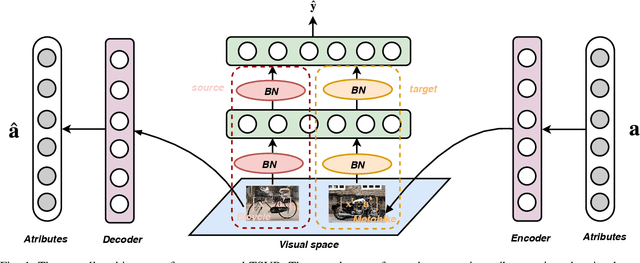

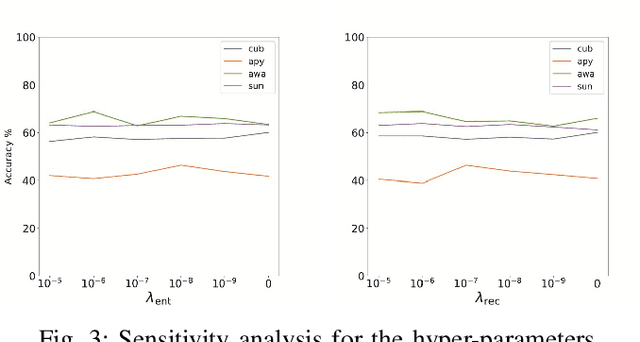
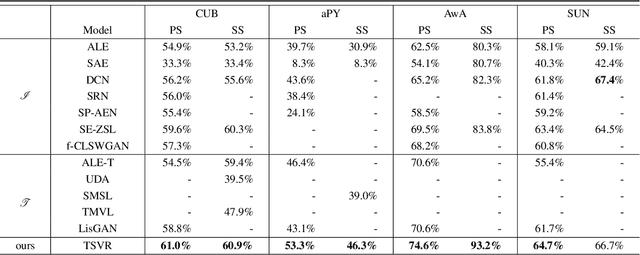
Abstract:Zero-Shot Learning (ZSL) aims to learn recognition models for recognizing new classes without labeled data. In this work, we propose a novel approach dubbed Transferrable Semantic-Visual Relation (TSVR) to facilitate the cross-category transfer in transductive ZSL. Our approach draws on an intriguing insight connecting two challenging problems, i.e. domain adaptation and zero-shot learning. Domain adaptation aims to transfer knowledge across two different domains (i.e., source domain and target domain) that share the identical task/label space. For ZSL, the source and target domains have different tasks/label spaces. Hence, ZSL is usually considered as a more difficult transfer setting compared with domain adaptation. Although the existing ZSL approaches use semantic attributes of categories to bridge the source and target domains, their performances are far from satisfactory due to the large domain gap between different categories. In contrast, our method directly transforms ZSL into a domain adaptation task through redrawing ZSL as predicting the similarity/dissimilarity labels for the pairs of semantic attributes and visual features. For this redrawn domain adaptation problem, we propose to use a domain-specific batch normalization component to reduce the domain discrepancy of semantic-visual pairs. Experimental results over diverse ZSL benchmarks clearly demonstrate the superiority of our method.
Applications of Social Media in Hydroinformatics: A Survey
May 01, 2019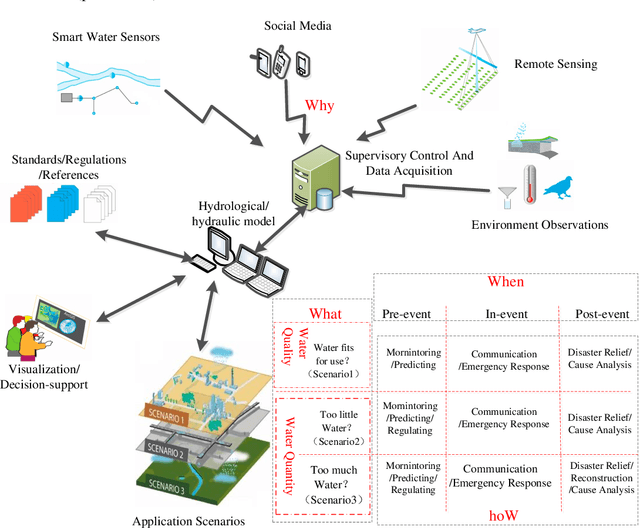
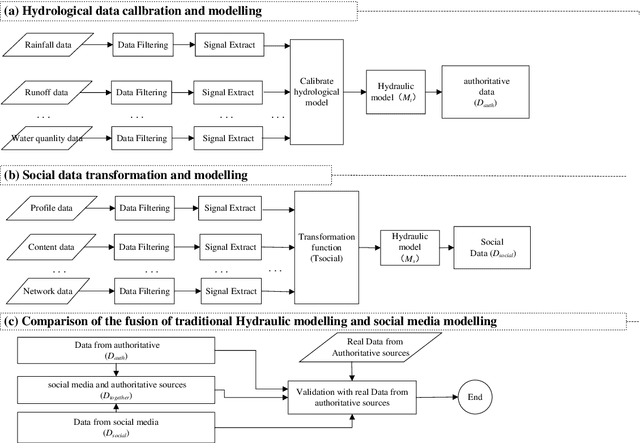
Abstract:Floods of research and practical applications employ social media data for a wide range of public applications, including environmental monitoring, water resource managing, disaster and emergency response.Hydroinformatics can benefit from the social media technologies with newly emerged data, techniques and analytical tools to handle large datasets, from which creative ideas and new values could be mined.This paper first proposes a 4W (What, Why, When, hoW) model and a methodological structure to better understand and represent the application of social media to hydroinformatics, then provides an overview of academic research of applying social media to hydroinformatics such as water environment, water resources, flood, drought and water Scarcity management. At last,some advanced topics and suggestions of water related social media applications from data collection, data quality management, fake news detection, privacy issues, algorithms and platforms was present to hydroinformatics managers and researchers based on previous discussion.
A Novel Trend Symbolic Aggregate Approximation for Time Series
May 01, 2019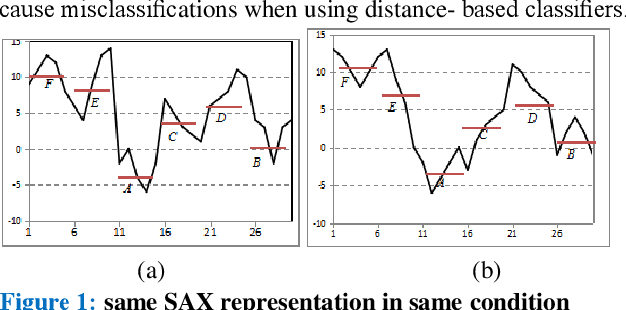
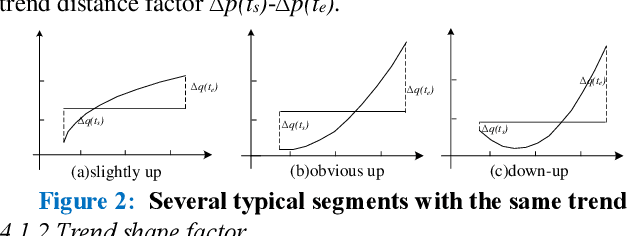
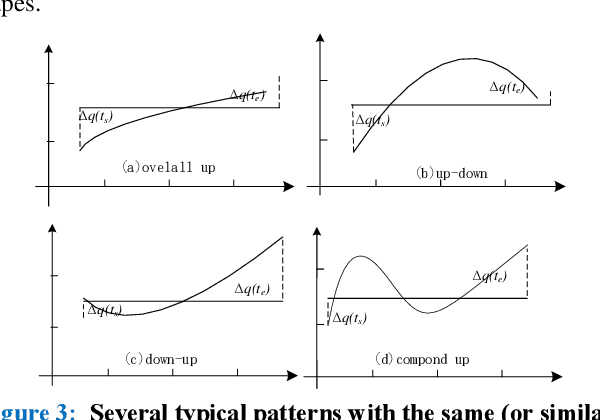
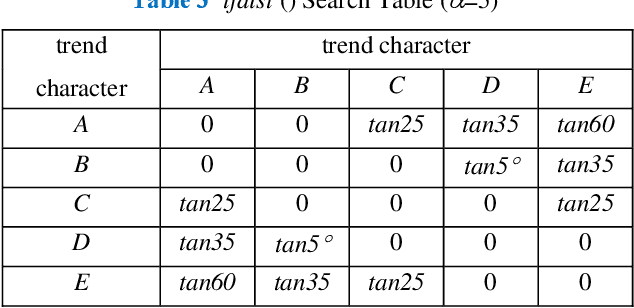
Abstract:Symbolic Aggregate approximation (SAX) is a classical symbolic approach in many time series data mining applications. However, SAX only reflects the segment mean value feature and misses important information in a segment, namely the trend of the value change in the segment. Such a miss may cause a wrong classification in some cases, since the SAX representation cannot distinguish different time series with similar average values but different trends. In this paper, we present Trend Feature Symbolic Aggregate approximation (TFSAX) to solve this problem. First, we utilize Piecewise Aggregate Approximation (PAA) approach to reduce dimensionality and discretize the mean value of each segment by SAX. Second, extract trend feature in each segment by using trend distance factor and trend shape factor. Then, design multi-resolution symbolic mapping rules to discretize trend information into symbols. We also propose a modified distance measure by integrating the SAX distance with a weighted trend distance. We show that our distance measure has a tighter lower bound to the Euclidean distance than that of the original SAX. The experimental results on diverse time series data sets demonstrate that our proposed representation significantly outperforms the original SAX representation and an improved SAX representation for classification.
 Add to Chrome
Add to Chrome Add to Firefox
Add to Firefox Add to Edge
Add to Edge